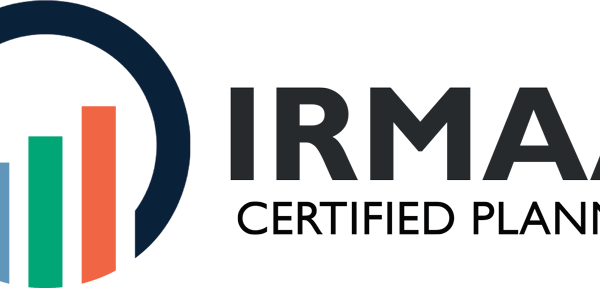Imagine, for a moment, you’re on a journey through the year with your Medicare Part D insurance plan. Suddenly, you hit an unexpected twist: the Medicare Donut Hole. It’s not as sweet as it sounds. Navigating through this perplexing lapse in medication coverage, numerous individuals find themselves unexpectedly wrestling with steep health costs directly from their pockets. Once upon a time in 2006, this coverage gap was like falling into a financial black hole where full prices haunted enrollees’ wallets.
But here’s something that might surprise you: officially, there’s no more donut hole since 2024. Sounds relieving? Yet the plot thickens when we consider how prices within what used to be known as the donut hole can still affect your pocketbook today.
The saga doesn’t end there; recent legislation promises even more changes ahead. Have these shifts truly banished our old foe, or is it lurking under another guise? Let’s embark on unraveling this mystery together and explore if and how navigating through medicare insurance can become simpler for everyone involved. With new rules in play, we’re stepping into uncharted territory—but together, we can make sense of these changes.
Understanding the Medicare Plans Donut Hole
The Four Coverage Stages
Imagine a journey through four distinct lands, each with its own rules. That’s your Medicare Part D trip. First, you pay up until your deductible is met. Then, you cruise into the initial coverage period where you and your plan share drug prices.
When do you enter the Medicare Part D coverage gap?
You hit this spot when combined payments by you and your plan reach a set limit. Welcome to the donut hole.
Costs in the gap
In this zone? Brace yourself for higher out-of-pocket expenses on prescriptions till catastrophic coverage kicks in.
Navigating Prescription Drug Costs in the Donut Hole
Alright, let’s break it down. When you’re stuck in that infamous Medicare donut hole, things get a bit tricky with your prescription drug prices. But hey, knowledge is power.
Brand-name prescription drugs
You might feel the pinch because now you’re covering 25% of those brand-name drug costs. Ouch.
Items that count towards the gap
- Your actual out-of-pocket expenses (Yep, every penny counts.)
- The discount you receive on brand-name meds (Thank goodness for small mercies.)
Items that don’t count towards the gap
- Your plan’s premium (Wouldn’t that be nice?)
Escaping from The Medicare Gap
Finding yourself in the Medicare Part D donut hole can feel like being stuck in a maze. But hey, there’s a way out. Let’s break it down.
How do you get out of the Medicare Part D donut hole?
Unlocking the exit involves grasping which expenses push you beyond the threshold. Think of it as your financial fitness tracker for prescription drug spending.
Expenses that count toward the gap
- Your yearly deductible, coinsurance, and copayments
- What you pay in the gap
- Certain discounts on drugs
Expenses that don’t count toward the gap
- The plan’s premium
- Pharmacy dispensing fees
- What you pay for drugs that aren’t covered
Assistance and Strategies for Managing Donut Hole Costs
Assistance with medication costs
You’ve got a team on your side to navigate these waters. Extra Help is like a financial superhero when it comes to prescription drug costs. It swoops in to save the day, ensuring that if you hit the donut hole, its impact on your wallet isn’t catastrophic.
Five tips to avoid the Medicare Gap
- Review your plan yearly: Plans change; so do medications. Stay ahead.
- Avoid surprises by knowing what’s covered: You need to know which drugs are on your plan’s formulary.
- Talk with your doc about generics: Generics can be just as effective but at a fraction of the cost.
- Gather intel from pharmacies: Punch those numbers and see where savings hide.
- Squeeze every drop out of manufacturer discounts: These can be golden tickets to help you stay out of that infamous gap.
Future of Medicare Insurance Gap
Ever wonder if the gap stage, also known as the donut hole, is pulling a Houdini and disappearing? Well, it kind of is.
Is the Medicare Coverage Gap stage going away?
Officially, there are no more nightmares about falling into a coverage gap. It’s been slowly closing up shop since 2024, thanks to some smart moves by lawmakers.
The Inflation Reduction Act (IRA) signed by President Biden in 2024
Talk about a game-changer. The IRA is set to completely eliminate the Prescription Drugs Coverage Gap for seniors by 2025. So yes, big changes are ahead.
Conclusion
We discovered that stepping into what used to be known as the donut hole doesn’t have to spell disaster for your wallet. With strategic planning and an understanding of how costs work within a coverage gap, navigating these waters becomes less about fearing what lurks beneath and more about sailing smoothly towards cost-saving shores.
The future looks promising too! Recent legislation hints at further transformations on the horizon—potentially reshaping or even eliminating this infamous gap. This is big news folks!
But let’s not just sit back and watch these changes unfold from afar. Armed with knowledge and strategies to minimize out-of-pocket expenses today, we’re better prepared than ever for whatever tomorrow throws our way in terms of medicare donut hole developments.
Streamlining the Medicare Surcharge Calculation Process.
Our Healthcare Retirement Planner software is designed to streamline the retirement planning process for financial professionals. By providing an efficient way to calculate IRMAA costs, our tool helps you save time and focus on other aspects of your clients’ retirement plans.
- Faster calculations: Our software quickly calculates IRMAA costs based on your client’s income and tax filing status, eliminating manual calculations and potential errors.
- User-friendly interface: The intuitive design of our platform makes it easy for financial professionals to input data and generate results with minimal effort.
- Data integration: Seamlessly integrate our calculator into your existing financial planning tools or CRM systems for a more streamlined workflow.
- Easy to Understand Reports: Export reports to easily share with your clients
- Tax and Surcharge Modeling: see how different types of income affects both taxes and your surcharges.
In addition to simplifying the calculation process, using our Healthcare Retirement Planner can also help improve communication between you and your clients. With clear visuals that illustrate how IRMAA costs impact their overall retirement plan, you can effectively convey complex information in an easily digestible format. This enables clients to make informed decisions about their healthcare expenses during retirement while ensuring they are prepared for any potential changes in Medicare premiums due to income fluctuations. To learn more about how our software can benefit both you as a financial professional and your clients’ retirement planning experience, visit the features page. Streamlining retirement planning processes can help financial professionals save time and resources, allowing them to focus on other areas of their clients’ needs. Automated calculation of IRMAA costs is the next step in streamlining this process even further.





